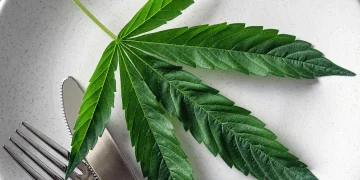[ad_1]
Breaking the Stigma: Addressing Marijuana Social Norms in Today’s Society
In recent years, there has been a significant shift in attitudes towards marijuana. Once considered a taboo subject, marijuana use has become more accepted in society. However, there are still many social norms surrounding marijuana that need to be addressed in order to break the stigma associated with it. In this article, we will explore the current state of marijuana social norms, common misconceptions, and strategies for changing attitudes towards this plant.
The Evolution of Marijuana Social Norms
For decades, marijuana has been demonized in society as a dangerous and addictive drug. This stigma was perpetuated by misinformation and fear-mongering campaigns that portrayed marijuana users as lazy, unmotivated, and a danger to society. As a result, marijuana was classified as a Schedule I drug under the Controlled Substances Act, alongside substances like heroin and LSD.
In recent years, however, there has been a growing body of research that highlights the potential medical benefits of marijuana. Studies have shown that marijuana can help alleviate symptoms of chronic pain, epilepsy, and PTSD, among other conditions. This new information has led to a shift in attitudes towards marijuana, with many states legalizing medical and recreational use.
Common Misconceptions About Marijuana
Despite the changing attitudes towards marijuana, there are still many misconceptions about the plant and its effects. One common misconception is that marijuana is a gateway drug that leads to the use of harder substances. However, research has shown that the vast majority of people who use marijuana do not go on to use harder drugs.
Another misconception is that marijuana is highly addictive. While some people may develop a dependence on marijuana, especially if they use it regularly, it is not as addictive as substances like heroin or cocaine. In fact, studies have shown that marijuana is less addictive than alcohol and tobacco.
Breaking the Stigma
In order to break the stigma surrounding marijuana, it is important to challenge these misconceptions and educate the public about the plant. One way to do this is through open and honest conversations about marijuana use. By sharing personal stories and experiences, individuals can help to humanize marijuana users and show that they are not the stereotypes portrayed in the media.
It is also important to highlight the medical benefits of marijuana and the positive impact it can have on people’s lives. By showcasing the research and science behind marijuana, we can help debunk myths and misinformation that have long been associated with the plant.
Changing Attitudes Towards Marijuana
Changing attitudes towards marijuana will require a concerted effort from individuals, communities, and policymakers. One way to do this is by supporting legislation that legalizes marijuana and regulates its production and sale. By creating a legal framework for marijuana, we can ensure that it is safe and accessible to those who choose to use it.
Education is also key to changing attitudes towards marijuana. By providing accurate information about the plant and its effects, we can empower people to make informed decisions about their use. This includes educating young people about the risks and benefits of marijuana, as well as providing resources for those who may be struggling with dependence.
Conclusion
In conclusion, breaking the stigma surrounding marijuana will require a multi-faceted approach that includes education, advocacy, and policy change. By challenging misconceptions, sharing personal stories, and highlighting the medical benefits of marijuana, we can help to change attitudes towards this plant and create a more accepting and inclusive society.
It is important to remember that marijuana is a complex and nuanced issue that cannot be reduced to simple stereotypes and assumptions. By approaching the topic with empathy and understanding, we can work towards a more informed and compassionate society where marijuana users are treated with respect and dignity.
Together, we can break the stigma and create a society where marijuana is seen as a plant with potential benefits rather than a dangerous drug. Let’s work together to change attitudes and create a more positive and accepting environment for all individuals, regardless of their choices regarding marijuana use.
[ad_2]































































